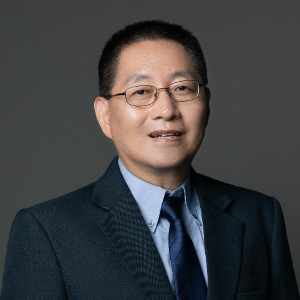Title : Low temperature catalytic oxidations on bimetallic catalysts employing molecular oxygen
Abstract:
About 30% of the total production in the chemical industry and many emissions control catalytic reactions use catalytic oxidation processes/technologies. In these oxidation reactions, employing molecular oxygen (O2 ) as the oxidant is the most environmentally benign approach, in which, activation of O2 by catalysts to obtain the desired active oxygen species is crucial. And furthermore, how to develop catalysts workable under mild reaction conditions is a big challenge.
In this work, we report preparation of various supported mono- and bi-metallic catalysts and their applications in several oxidation reactions: (i) the photo-degradation of methyl orange (MO) in water under visible light(ii) the catalytic wet air oxidation (CWAO) of dyes in wastewaters, and (iii) preferential oxidation (PROX) of CO in H2 -rich gas mixtures. It was found that some bimetallic catalysts showed better capability for oxygen activation and for catalytic oxidations than the corresponding monometallic catalysts. For example, the prepared AuPd(3:1)/TiO2 catalyst with formation of AuPd alloy particles showed high activity towards MO degradation under visible light; Similarly, AuCu and AuPd bimetallic nanoparticles deposited on some other catalyst supports also showed high catalytic activities towards PROX of CO and CWAO of dyes (Safranine O (SO), Methylene Blue (MB) and Brilliant Green (BG)) at reaction temperatures close to 0o C. The effects of calcination temperature, Au/Pd and Au/Cu ratios, catalyst dosage, dye concentration and reaction efficiency were investigated for the hybrid bimetallic catalyst systems. The supported AuPd(1:1) catalyst with an Au/ Pd mass ratio of 1:1 calcined at 400 °C possessed the highest catalytic activity for the dye degradation through CWAO. It could be workable for dye degradation with high concentration even at the reaction temperature lower than room temperature, e.g., 5 °C, and exhibited a good chemical stability. In addition, high dye removal efficiency still could be achieved after five times reuse. The mechanism for the improved catalytic activity was investigated, e.g., by indirectly using quenchers for various reactive oxygen species (ROSs). It revealed that superoxide radical (•O2 -) and singlet oxygen (1 O2 ) are the main active oxidative species during CWAO of dyes.
These results show some supported bimetallic catalysts are workable for a number of oxidation reactions at quite low temperatures with high catalytic efficiencies.



